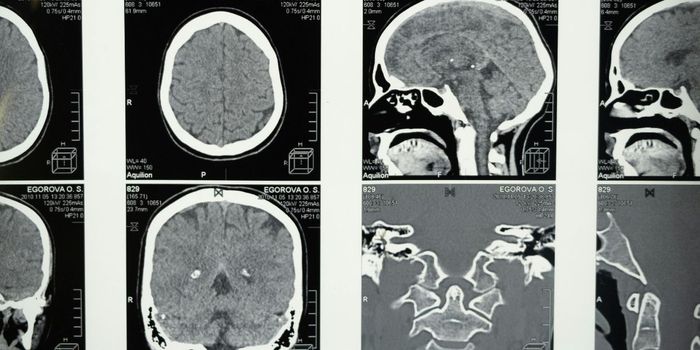Visualizing Anxiety in the Brain
Anxiety is a terrible burden for those who suffer from it. It's different than just fear, and it can be difficult for patients to understand why they feel as they do since anxiety doesn't always result from a rational stressor.
Many patients must go through life with a constant undercurrent of stress and worry interfering with daily activities. It's difficult to treat, because while there are many medications, they have side effects that can be problematic, including the genuine risk of dependence, and they don't work for everyone.
Researchers from the Salk Institute are looking to understand the brain processes that result in fear and anxiety, and they are using the tiniest rock star of neuroscience research, the nematode worm. The challenge was to stress the worms and induce a fear response and then study the molecular action in the brain of the worm. A human brain has over 100 billion neurons and visualizing that many cells at the same time isn't possible, nor is drilling down to the individual cells. Nematodes have only 302 neurons, and they can all be seen at the same time. This makes the c. elegans better for research than other lab animals because no matter the stimuli, scientists can see how each neuron reacts. That isn't possible with other species.
So how does one go about scaring a worm? Salk scientists turned to another slimy character, the Pristionchus pacificus, which is the natural predator of the c. elegans. It excretes a unique chemical when it's on the attack, and the nematode can sense this and will then run away and exhibit a fear-like response. When researchers were able to track the molecular pathways that that were activated in this response, there were similarities to what happens in human anxiety and exploring this connection could lead the way to better treatments for conditions like PTSD, generalize anxiety disorder and phobias.
The team at Salk was not sure if a simple organism like c. elegans would exhibit a complex fear response, but that's precisely what happened. When the chemical, from a class of molecules called sulfolipids, was added to the solution the worms were submerged in, four different brain circuits lit up and were involved in causing the nematode to back up or reverse direction to get away from a perceived predator, even though there were no Pristionchus pacificus worms nearby. The nematodes also did not lay any eggs while in the sulfolipid solution, nor for an hour after they had been removed from it. The fear response and the continued response after removing the stressor shows that the fear has lasting effects, even in animals who do not have complex brains.
When the worms were exposed to a solution containing the drug Zoloft which is used for humans who have anxiety, the sulfolipids did not induce a fear response, proving that even an organism with basic brain structure will respond similarly to much more complex species who have evolved much further. Sreekanth Chalasani ab associate professor in Salk's Molecular Neurobiology Laboratory and senior author of the paper said in a press release, "We hope the findings from this paper will contribute to the field by providing a broader picture of some of these signaling activities. Our findings suggest that fear and anxiety are ancient and evolved much earlier than we originally thought. The pathways, nerves, circuits, and genes that we'll now be able to study in the worm should inform us about this process in humans." See the video from the team at Salk to learn more about this new work.
Sources: Salk Institute, Nature Communications


![Alzheimer's Disease Pathway [Infographic]](https://d3bkbkx82g74b8.cloudfront.net/eyJidWNrZXQiOiJsYWJyb290cy1pbWFnZXMiLCJrZXkiOiJjb250ZW50X2FydGljbGVfcHJvZmlsZV9pbWFnZV8xMmVjNTUzMjVkMTUzODU2OGJlOGYwYzRiYzJmODc5MGE1ZGM1MDljXzI0NjEuanBnIiwiZWRpdHMiOnsidG9Gb3JtYXQiOiJqcGciLCJyZXNpemUiOnsid2lkdGgiOjcwMCwiaGVpZ2h0IjozNTAsImZpdCI6ImNvdmVyIiwicG9zaXRpb24iOiJjZW50ZXIiLCJiYWNrZ3JvdW5kIjoiI2ZmZiJ9LCJmbGF0dGVuIjp7ImJhY2tncm91bmQiOiIjZmZmIn19fQ==)






